Whole Life Insurance in Canada: Your Complete Guide to Costs, Benefits, and Policy Choices

Whole life insurance in Canada offers enduring financial security, combining a guaranteed death benefit with consistent premiums and a tax-deferred cash value component to safeguard your family’s future.
This guide will clarify what whole life insurance entails, break down premium expenses, explore its key advantages, and compare available policy options. You’ll discover:
The definition of whole life insurance and how it differs from term coverage
Factors influencing premiums and how to obtain accurate quotes
Core benefits such as guaranteed death benefits, cash value accumulation, and estate planning support
Details on participating policies with dividends and how to select top-performing insurers
Comparisons between whole life insurance, term life insurance, and alternative hybrid solutions
Essential criteria for choosing the best Canadian providers
Answers to common inquiries, investment considerations, and the impact of taxation
Best practices for implementing structured data markup and optimizing images
With this comprehensive overview, you can confidently assess your whole life insurance choices and make well-informed decisions that align with your personal financial goals.
Understanding Whole Life Insurance in Canada
Whole life insurance in Canada provides permanent coverage that remains active throughout the insured individual’s entire life, provided premiums are consistently paid. It integrates a guaranteed death benefit with fixed premiums and a savings element known as cash value.
How Whole Life Insurance Delivers Lifelong Protection
Whole life insurance ensures lifelong coverage by setting premium rates and death benefits at the policy's inception. This stability guarantees that, as long as premiums are met, the policy cannot be cancelled due to changes in age or health. The accumulating cash value also helps maintain the policy's effectiveness in later years.
Key Components of Whole Life Insurance
Whole life insurance is built upon three fundamental elements:
Death Benefit: A guaranteed payout to your designated beneficiaries upon your passing.
Fixed Premiums: Payments that remain consistent and unchanged from the policy's start date.
Cash Value: A savings component that grows on a tax-deferred basis.
| Component | Description | Benefit |
|---|---|---|
| Death Benefit | Guaranteed payout to your named beneficiaries | Provides financial security for your loved ones |
| Fixed Premiums | Consistent premium schedule throughout the policy's term | Offers budget certainty and protection against rate increases |
| Cash Value | The savings portion of your premium payments that accumulates over time | Provides liquidity and a potential source for borrowing |
These components work in harmony to offer stable protection, long-term savings, and flexibility in financial planning.
Understanding the Cost of Whole Life Insurance in Canada

Premiums for whole life insurance in Canada are typically higher than those for term coverage, as they fund both lifelong protection and the growth of cash value. Understanding the factors that influence these costs will help you secure accurate quotes.
Factors Influencing Whole Life Insurance Premiums
The calculation of your premium involves several key variables:
Age at Policy Issue: Younger individuals generally qualify for lower rates.
Health Status: Your medical history, lifestyle choices, and results from medical exams play a significant role in underwriting.
Coverage Amount: Policies with higher death benefits will naturally have higher premiums.
Smoking Status: Smokers are typically classified as higher risk, leading to increased premiums.
These factors, combined with choices like limited pay options, will ultimately determine your annual premium obligation.
How to Obtain Accurate Whole Life Insurance Quotes in Canada
To get precise quotes for whole life insurance:
Complete a pre-qualification questionnaire to help narrow down potential cost ranges.
Consult with a licensed insurance advisor who can provide quotes from multiple carriers based on your specific profile.
Comparing information from digital tools and seeking professional advice will ensure you receive competitive offers tailored to your health and coverage requirements.
Limited Pay Options and Their Impact on Cost
Limited pay structures allow you to pay premiums over a shorter, defined period while still maintaining lifelong coverage:
| Option | Payment Period | Impact on Premium |
|---|---|---|
| 10-Pay | 10 years | Higher annual cost, but the policy is paid up sooner |
| 20-Pay | 20 years | Moderate premium level, with a shorter period to pay off the policy |
| Paid-Up at 65 | Premiums paid until age 65 | Balanced cost, with payments ceasing in mid-life |
Opting for a limited pay structure can accelerate cash value growth but will result in higher annual payments. It’s important to consider your budget and retirement plans when choosing a payment period.
Key Benefits of Whole Life Insurance in Canada

Whole life insurance offers a multitude of advantages that extend far beyond a basic death benefit.
How the Guaranteed Death Benefit Protects Your Beneficiaries
The guaranteed death benefit ensures that your beneficiaries will receive a predetermined payout upon your death, irrespective of the current cash value in the policy. This certainty provides essential financial stability for covering final expenses, outstanding mortgages, or ongoing living costs.
Understanding Cash Value and Its Tax-Deferred Growth
Cash value functions as a savings account within your policy that grows at a guaranteed rate. Because this growth is tax-deferred, you benefit from compound interest without incurring immediate taxes, thereby enhancing your long-term savings potential.
Accessing Your Cash Value During Your Lifetime
Policyholders have several ways to access their cash value:
Policy Loans: You can borrow against your cash value at competitive interest rates.
Withdrawals: You have the option to take out a portion of your cash value, which will reduce the death benefit.
Surrender: You can cancel your policy and receive the remaining cash value.
These options provide financial flexibility for emergencies, supplementary retirement income, or strategic investment opportunities.
Whole Life Insurance as an Estate Planning Tool
Whole life insurance serves as a valuable tool for estate planning by:
Providing tax-free death benefits to your heirs.
Helping to equalize inheritances, especially when illiquid assets are a significant part of the estate.
Offering funds to cover estate-related taxes and expenses.
By carefully structuring beneficiary designations and trusts, policyholders can optimize wealth transfer and minimize the administrative complexities of their estate.
Participating Whole Life Insurance in Canada Explained
Participating policies offer policyholders the potential to receive dividends, which are a share of the insurer's profits. This adds a fourth key benefit to the death benefit, fixed premiums, and cash value.
How Dividends Work in Participating Whole Life Policies
Dividends represent your share of the insurer's surplus profits, distributed annually. Insurers determine dividend amounts based on investment performance, mortality rates, and operational efficiency. While not guaranteed, many Canadian insurance companies have a consistent history of paying dividends.
Top Canadian Companies for Dividend-Paying Policies
Leading insurance providers known for strong dividend performance include:
Sun Life Financial
Manulife
Canada Life
Equitable Life
These companies have consistently maintained dividend scales that exceed industry averages, contributing to enhanced cash value growth for their policyholders.
Dividend Options Available to Policyholders
Policyholders typically have several options for how they receive their dividends:
Cash: Receive the dividend payment directly.
Paid-Up Additions: Use the dividend to purchase small increases in permanent coverage, which also adds to the cash value.
Premium Reduction: Apply the dividend to reduce your future premium payments.
Choosing the paid-up additions option can accelerate the growth of your cash value and death benefit without requiring additional out-of-pocket expenses.
Comparing Whole Life Insurance to Term Life Insurance in Canada
Understanding the distinctions between these policy types will help you select the one that best aligns with your financial objectives.
Key Differences Between Whole Life and Term Life Insurance
| Aspect | Whole Life | Term Life |
|---|---|---|
| Duration | Lifetime coverage (until death) | Coverage for a specified term (e.g., 10, 20, or 30 years) |
| Premiums | Level and guaranteed for life, level premiums never change | Lower initially, but may increase upon renewal |
| Savings Component | Cash value grows on a tax-deferred basis | No savings or investment feature |
| Dividend Potential | Available with participating policies | Not applicable |
Whole life insurance is ideal for long-term planning and integrating savings, whereas term life insurance is suited for meeting temporary coverage needs at a more affordable initial cost.
When Whole Life Insurance is a Better Choice Than Term Life
Whole life insurance is generally a better option when:
You require guaranteed lifelong protection.
Estate planning or wealth transfer is a primary financial goal.
You want a built-in savings mechanism through your premiums.
These situations benefit significantly from the stability, tax advantages, and guaranteed death benefits that whole life policies provide.
Availability of Hybrid Life Insurance Solutions in Canada
Yes, some insurers offer universal life or adjustable life policies that combine features of both term and permanent insurance. These layered solutions provide flexibility in premium payments and death benefit adjustments, effectively bridging the affordability of term insurance with the long-term security of permanent coverage.
Selecting the Best Whole Life Insurance Companies in Canada
Choosing the right provider involves evaluating their financial stability, customer service quality, and the specific features of their policies to ensure they meet your individual needs.
Criteria for Comparing Whole Life Insurance Companies
Key factors to consider when comparing providers include:
Financial Strength Ratings: Assess the insurer's stability and ability to pay claims.
Dividend Track Record: Examine the consistency and growth of their dividend scales.
Policy Flexibility: Look at available rider options, paid-up additions, and premium payment structures.
Customer Experience: Evaluate their claims process, online tools, and the quality of advisor support.
Leading Canadian Providers of Whole Life Insurance
Top insurance companies offering whole life insurance in Canada include:
Sun Life Financial: Known for strong dividend performance and a wide range of rider options.
Manulife: Offers a broad product portfolio and innovative digital quoting tools.
Canada Life: Has a long-standing history and provides diverse policy enhancements.
Equitable Life: Has strong financial stability and flexible entry with lower coverage amounts.
Impact of Dividend Performance and Policy Options on Your Choice
Companies with a proven history of paying dividends can enhance your cash value growth and potentially lower the net cost of your policy over time, as dividends can offset premium payments. It’s also beneficial to compare options like paid-up additions, accelerated death benefits, and flexible payment terms to ensure they align with your financial strategy.
Frequently Asked Questions About Whole Life Insurance in Canada
This section addresses more specific inquiries regarding whole life insurance.
Is Whole Life Insurance a Good Investment in Canada?
Whole life insurance can be a valuable component of a diversified financial strategy, offering forced savings, tax-deferred growth, and liquidity for your estate. While it's less volatile than market-based investments, it provides stability and guarantees that can be highly beneficial.
What Are the Downsides of Whole Life Insurance?
Potential drawbacks to consider include:
Higher initial premiums compared to term life insurance.
The complexity of policy features and projections for dividend growth.
Reduced flexibility if your coverage needs change significantly over time.
It’s important to weigh these costs against the long-term benefits and compare them with alternative investment options.
Tax Implications for Whole Life Insurance Benefits and Cash Value
Key tax considerations include:
Death Benefit: Typically received tax-free by beneficiaries.
Cash Value Growth: Generally not taxed annually until funds are withdrawn.
Policy Loans/Withdrawals: May be subject to taxation if the cash value withdrawn exceeds the total premiums paid.
Understanding these tax treatments is crucial for making informed decisions about accessing your policy's value.
Using Whole Life Insurance for Children or Business Owners
For children, whole life insurance can:
Secure lower premium rates at a young age.
Build cash value that can be used for future educational expenses.
For business owners, it can:
Fund buy-sell agreements.
Provide key-person insurance coverage.
Offer capital for business growth through policy loans.
These specialized applications leverage the benefits of permanent coverage to meet unique financial objectives.
Whole life insurance in Canada provides steadfast protection, predictable premiums, and growing cash value that supports estate planning and long-term savings goals. By carefully comparing costs, benefits, and participating options—and selecting a financially sound provider—you can secure a policy that perfectly aligns with your lifelong financial objectives.
Are you ready to explore whole life insurance options?
Get Your Personalized Quote Online – No Pressure, Just Peace of Mind
Why Choose Our Insurance Services?
✓ Commitment-free consultation – explore your coverage options without any obligation
✓ Clear, straightforward guidance – we explain everything in simple terms you'll understand
✓ Multi-company rate comparison – access competitive quotes from leading insurers
✓ Convenient consultation formats – meet in-person, by phone, or via video call
✓ Local BC expertise – deep understanding of provincial regulations and market conditions
Take the First Step Toward Financial Security
Contact us today: Call or text (778) 655-3874
Or schedule online: Book your complimentary consultation at your convenience.
Many BC families discover that comprehensive term life insurance protection costs far less than they expected. Let us show you how affordable real peace of mind can be for your loved ones.
Proudly Serving British Columbia, Canada Communities
Our licensed insurance professionals provide expert term life insurance guidance throughout Metro Vancouver and across BC, including Vancouver, Burnaby, Richmond, Surrey, Coquitlam, North Vancouver, West Vancouver, New Westminster, Delta, Langley, and all surrounding areas.
Licensed in British Columbia | Member, Insurance Brokers Association of BC

Serving Families in BC, Canada 🇨🇦
Vancouver
Burnaby
Coquitlam
Port Moody
Port Coquitlam
Maple Ridge
Surrey
Langley
Richmond
Abbotsford
Privacy Policy | Terms and Conditions
© Copyright | Michelle Leviste - Insurance Broker 2025. All Rights Reserved.